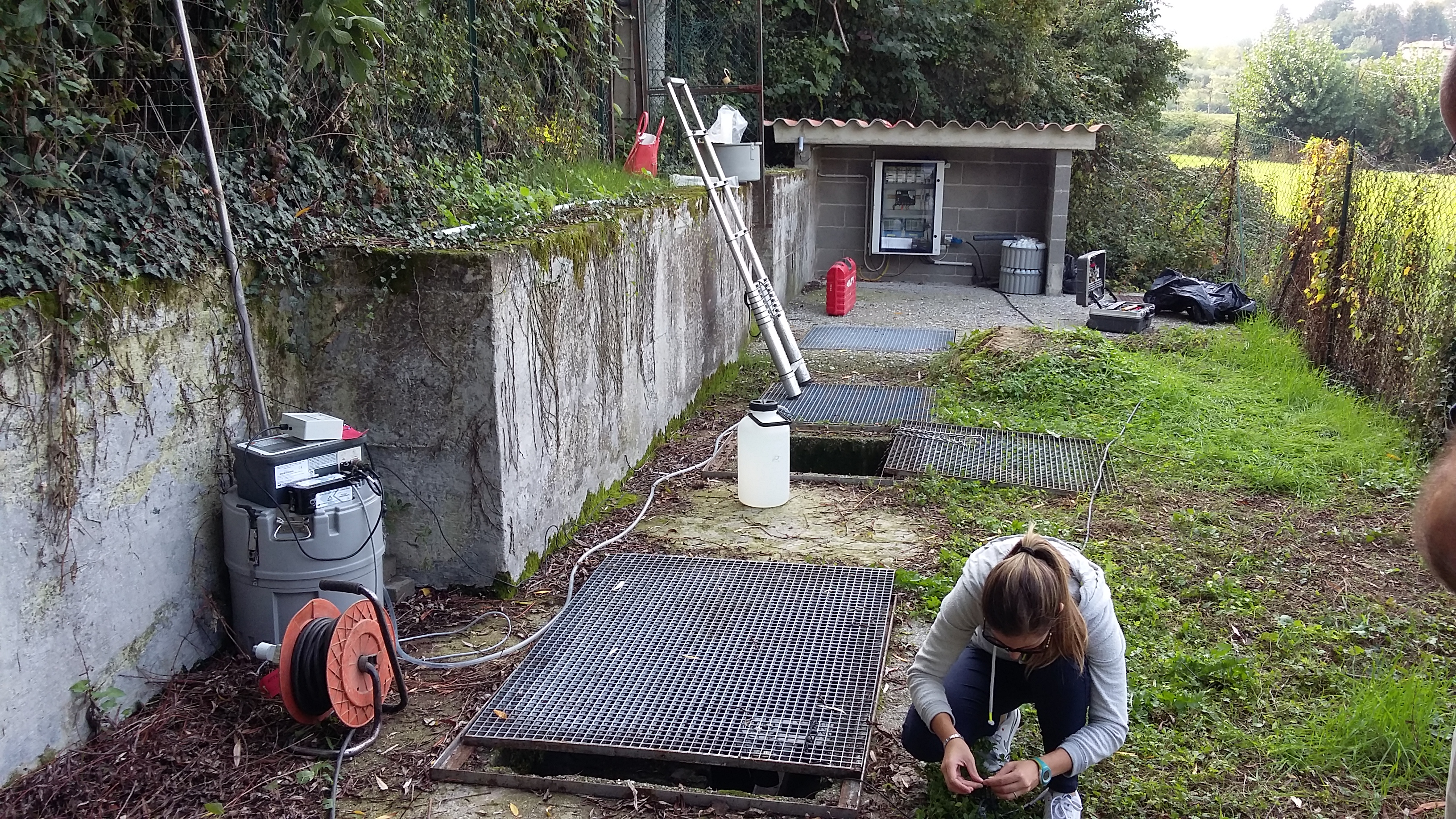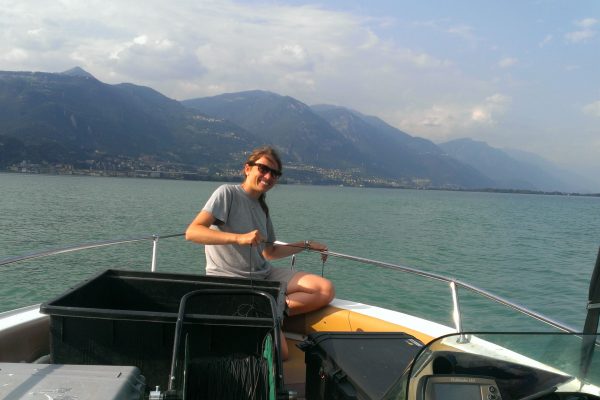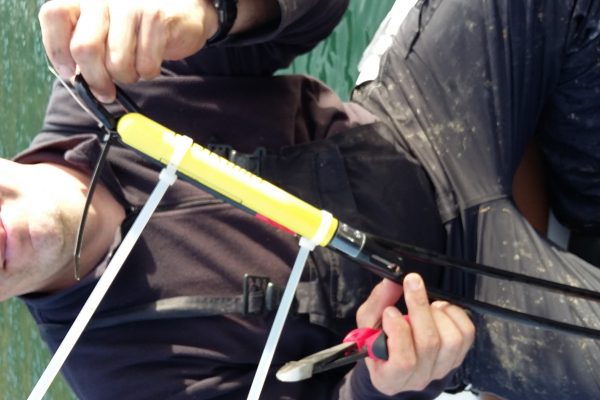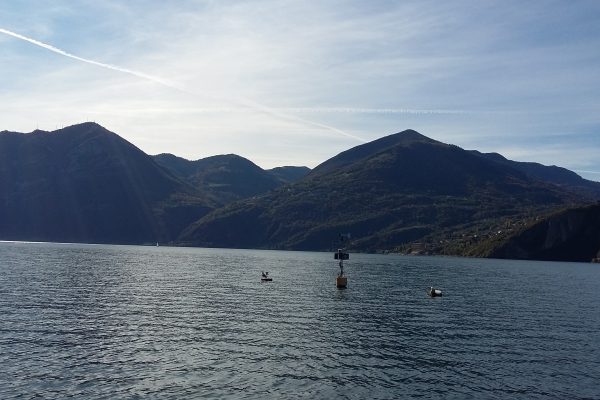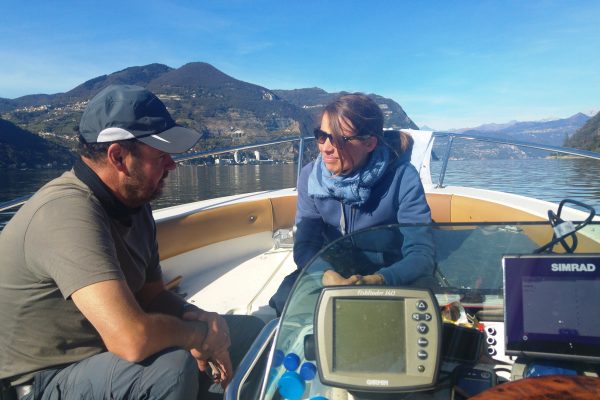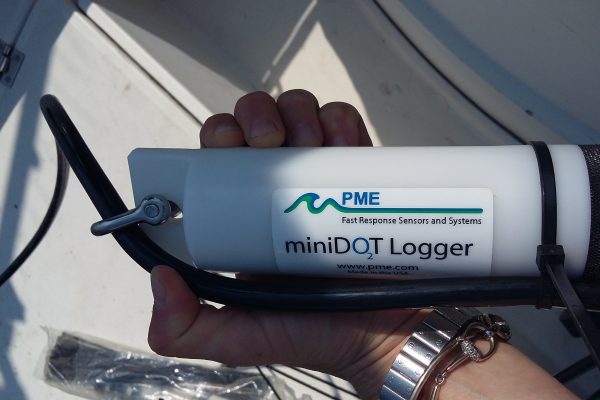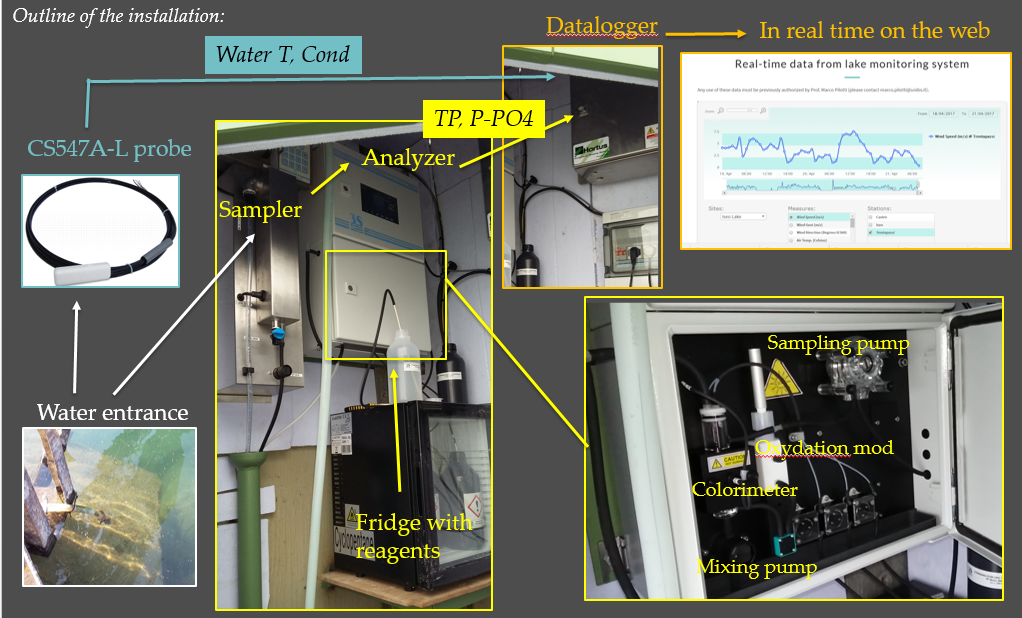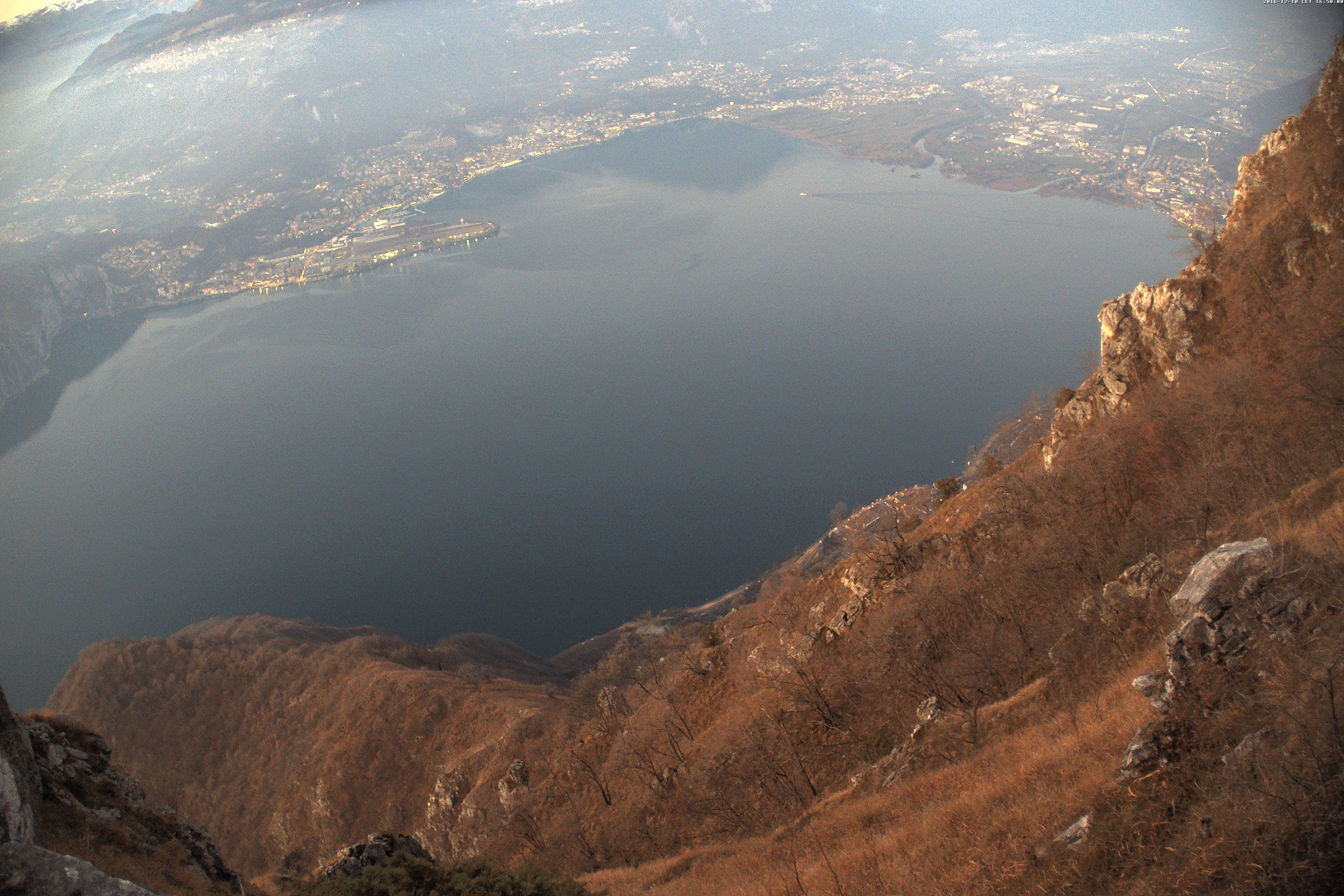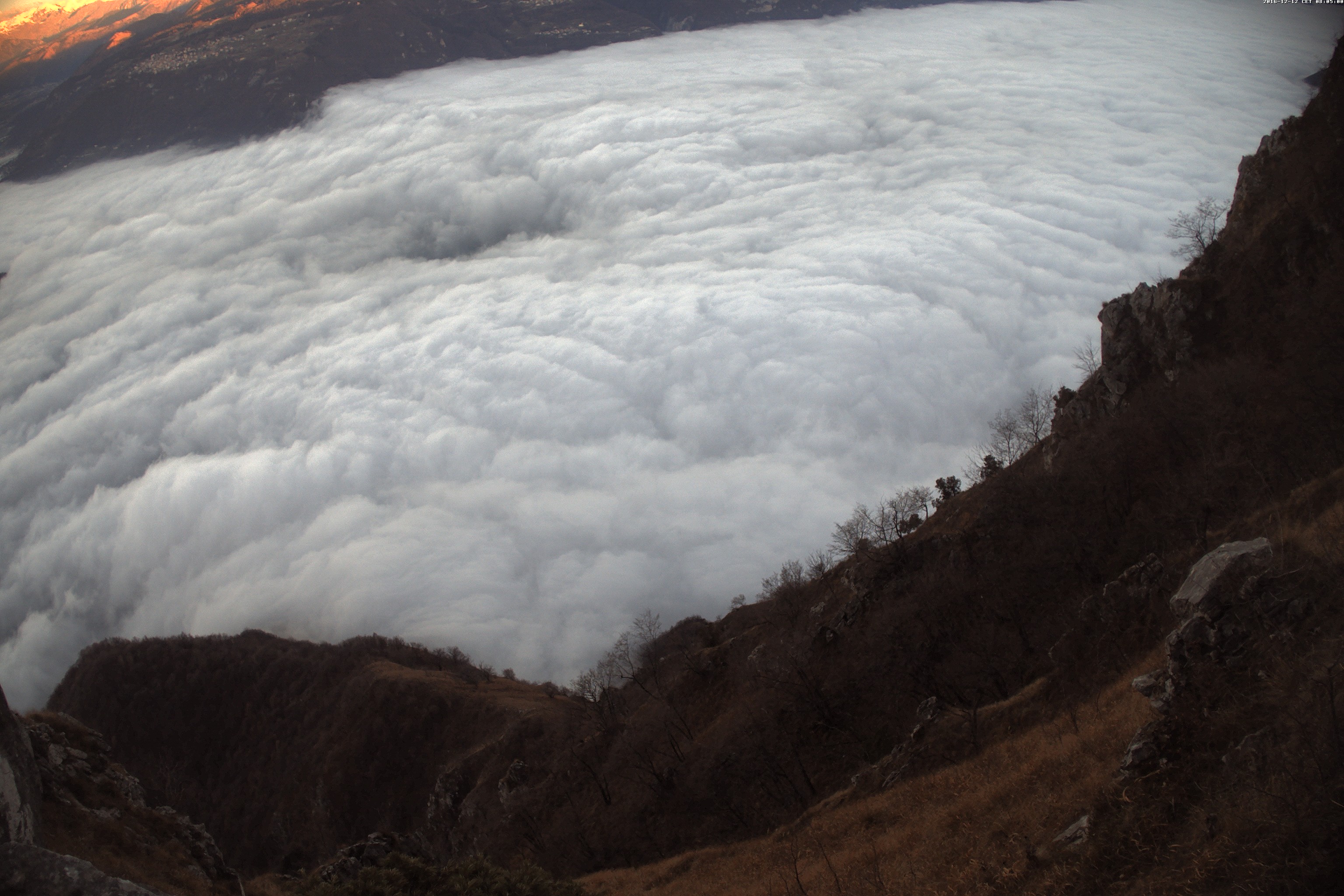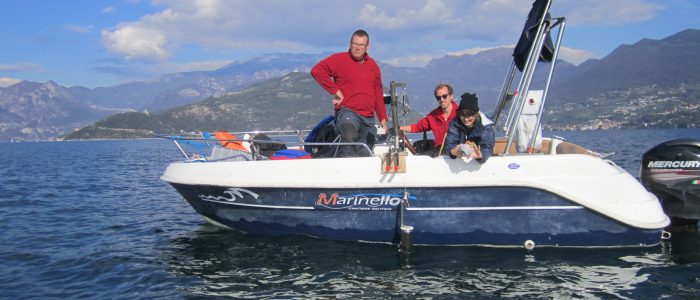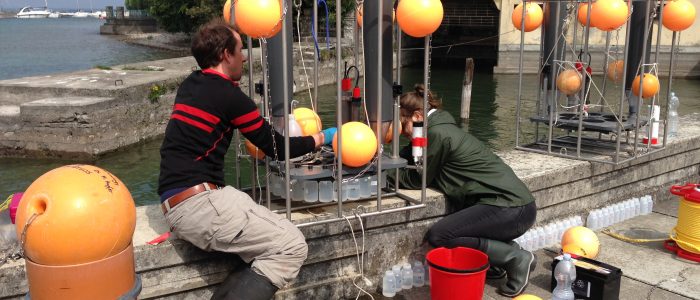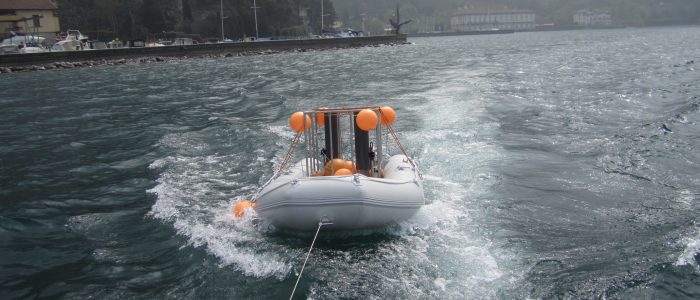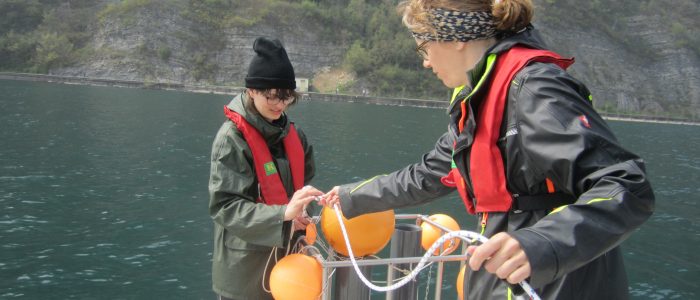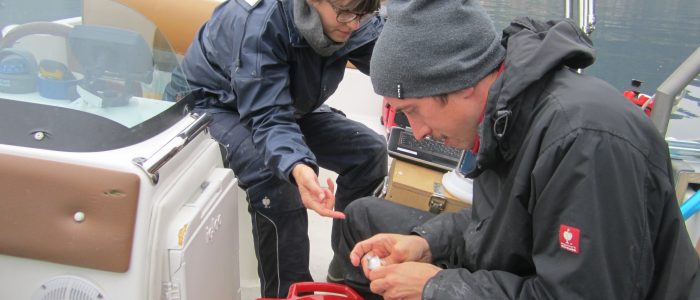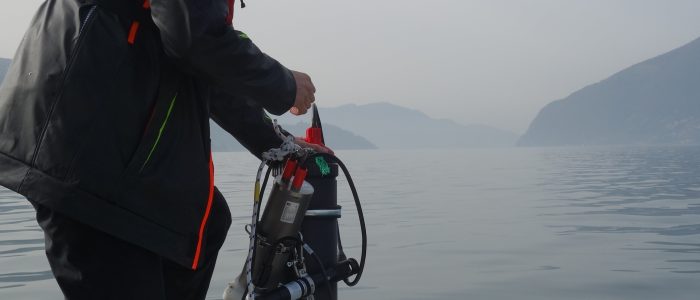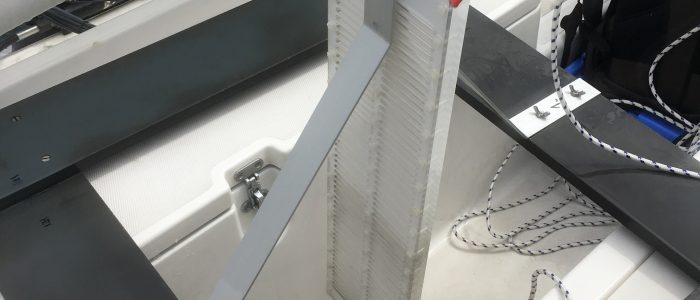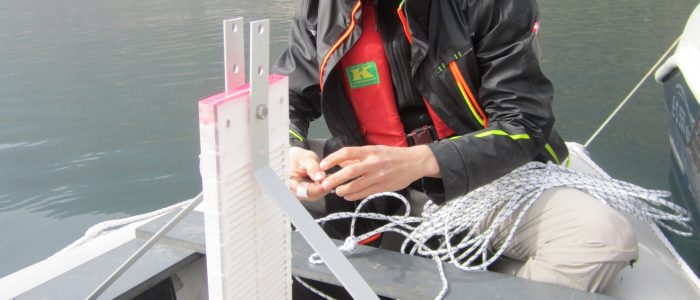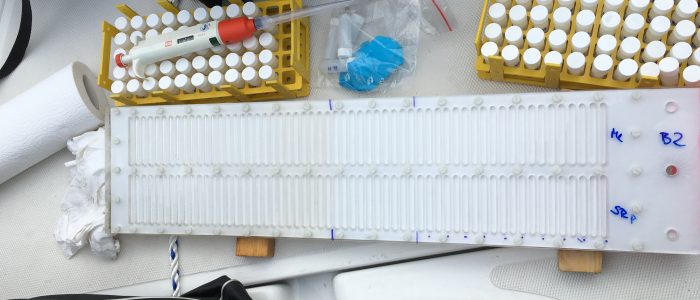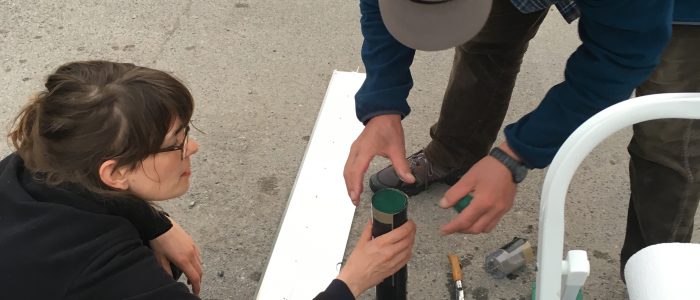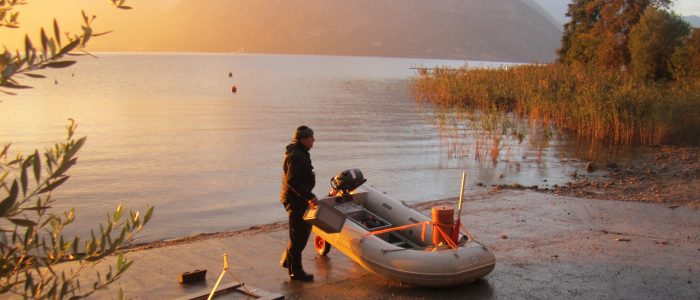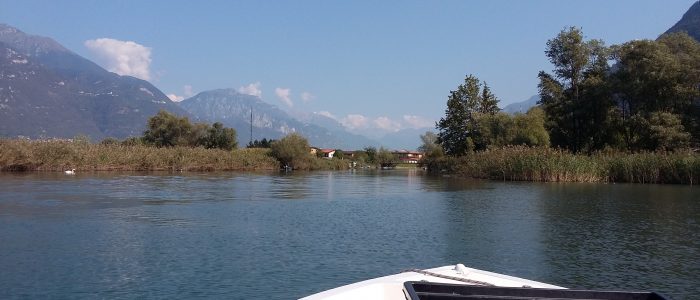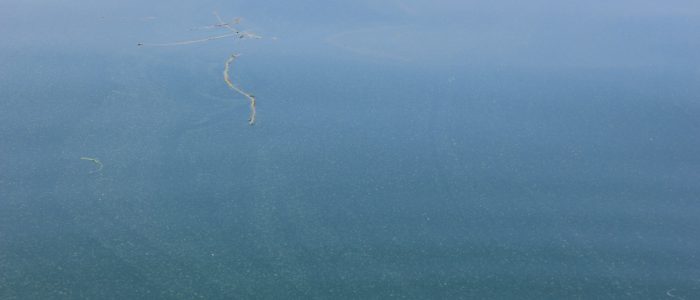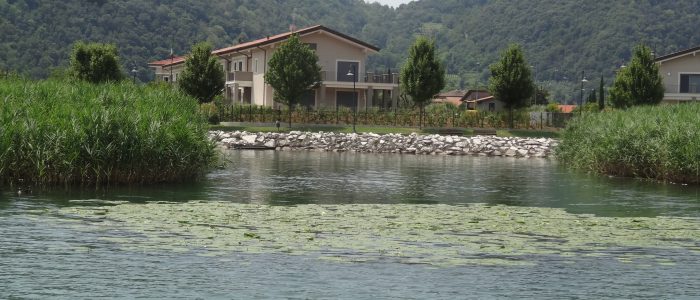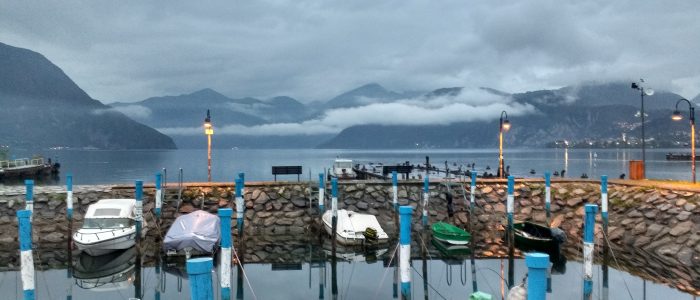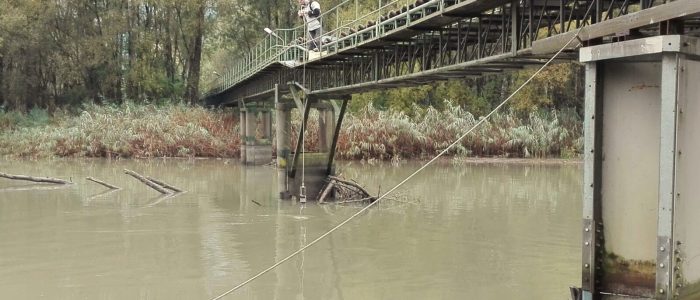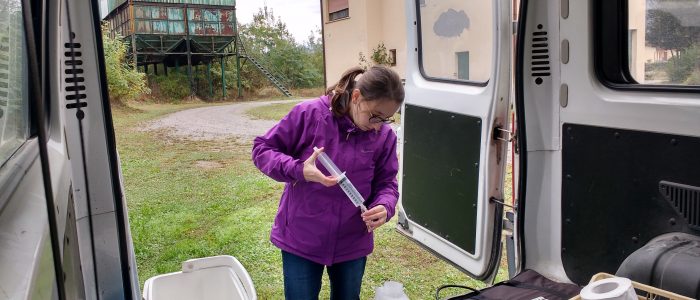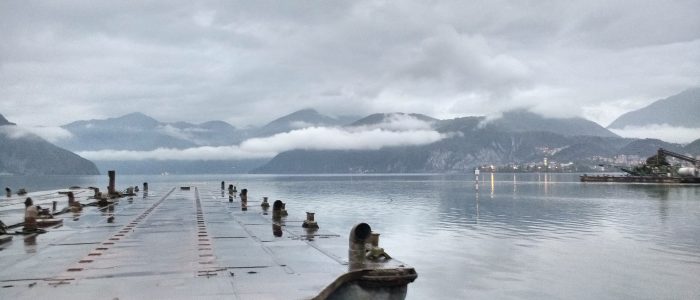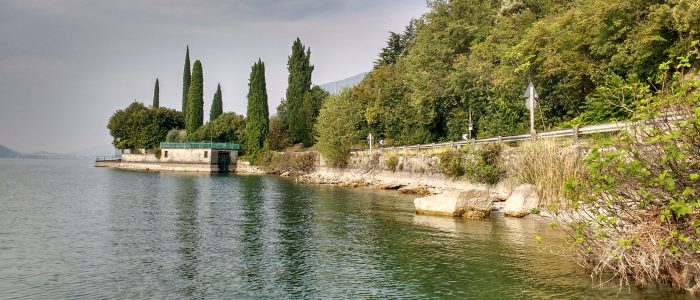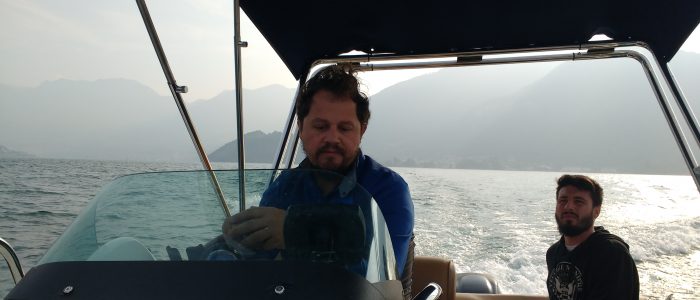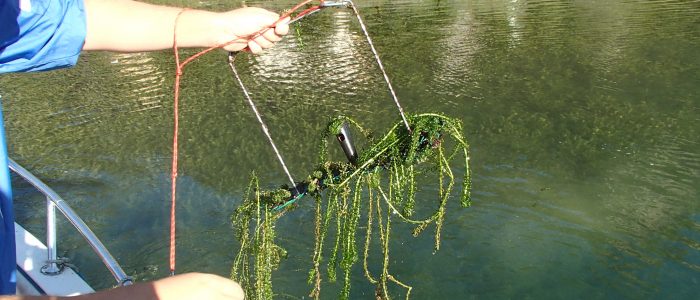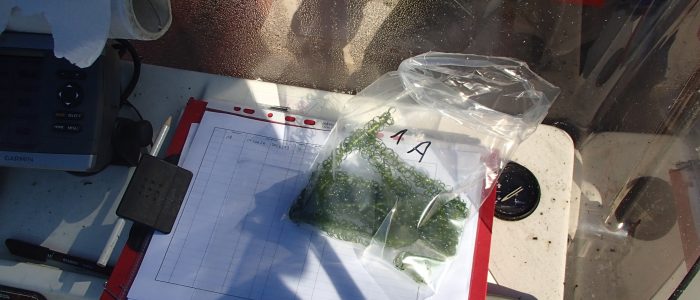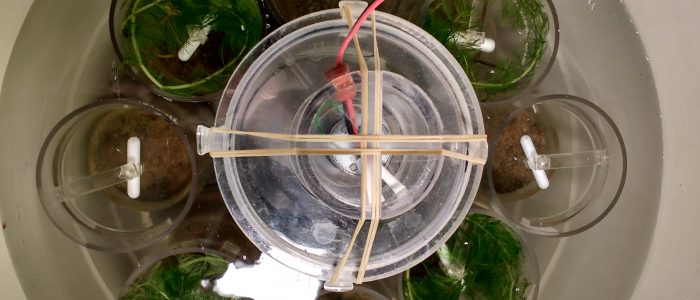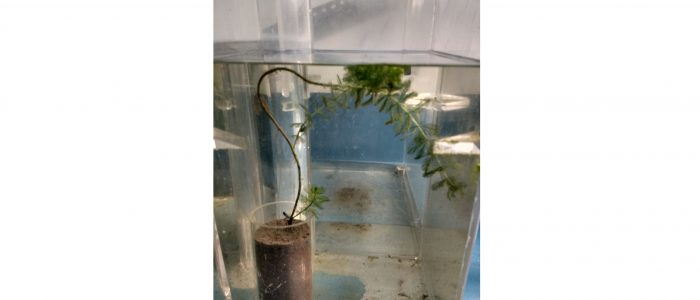Research activites
Monitoring the combined sewer overflows around lake Iseo (September 2017)
Two automatic samplers have been installed in correspondance of two important combined sewer overflows in Cortefranca and in Paratico. In these location, the water collected in the main collector is delivered to the southern area of the lake when the water level in the sewer’s pipes overcome a given threshold. During the overflow process, several samplings will be collected and then analyzed in the laboratory to characterize chemically and physically the outflowing water.
Joint field campaign by IGB and Unibs to monitor the oxycline oscillations induced by internal waves (July and October 2017)
IGB and Unibs are developing a joint research activity to understand the effect of the internal waves on the redox conditions at the sediment-water interface. The field data measured at moored stations and at sparse locations during a field campaign have shown regular oscillations of the oxygen between 1-3 mg/l around 100 m depth induced by the internal waves. Due to the bathymetry of the lake, this effect is particularly noticeable in the southern basin. Here the fluctuations of the oxycline act as a forcing on the sediments, inducing a daily modification of the redox conditions in a large area of the lake’s bottom.
Monitoring the Oglio river entering Lake Iseo (February 2017)
The realization of a monitoring site of the Oglio river has been completed. Now, in correspondence of the Oglio river mouth, we are measuring in real time the water conductivity, water temperature, orthophosphates and total phosphorous concentration of the water entering the Lake. Data are available at this link.
Remote monitoring of Lake Iseo (December 2016)
A webcam providing high-resolution images of the northern part of Lake Iseo was installed by Università di Brescia on the Corna Trentapassi. The images are udated every 30 minutes are available at this web-page. They are likely to provide an important contribution to the remote moniotring of the inflows entering Lake Iseo.
Field campaign conducted by the IGB group (April, June, October 2016)
This field campaign was aimed to assess the limnologic boundary conditions through the seasons (temperature and oxygen dynamics), to quantify pools and fluxes of nutrients and to understand the oxygen consuming processes in the water column and in the sediments.
To characterize the chemical water conditions, in different representative locations of the lake the IGB group measured the vertical profiles of temperature, conductivity, phytoplankton, CO2 oxygen and extracted different water samples to measured the content in phosphorus and dissolved metals in the lab. To characterize the sadiment composition and to quantify the phosphorous uptake, different sediment cores were sampled in different lake’s locations. Some of the cores were analyzed in fine spatial resolution the multi-elemantal analysis by the ITRAC scanner. Others were used in the lab to quantify the phosphorous uptake under anaerobic and aerobic conditions.
Two dialysis samplers were exposed for 14 days in two different locations to sample the sediment porwater and quantify the content of dissolved metals and P-, S-,N- species. The outcome of these measurments will allow to compute the fluxes of mobile substances across the sediment water interface. Finally, two multitrap samplers were exposed at two depths (below the espilimnion and in the hypolimnion) for 11 months to determine the fluxes of vertical matter and their seasonal variability.
Field campaign synchronous to Sentinel-2 and Landsat-8 satellite acquisition (7-8 July 2016; 26 September 2016)
This field campaign was aimed to collected in situ data to calibrate satellite data, parametrize algorithms, that will be used to obtain a water quality and macrophytes coverage from satellite products, and to validate a processing of satellite data.
The CNR-IREA group collected in the southern area the data regarding the apparent optical properties (the remote sensing reflectance above the water surface, the radiance emerging from water and from sky, the upwelling adn downwelling water leaving radiance above and below the water surface, the water transparency ), the inherent optical properties (the vertical profiles of total backscattering coefficient, the absorption coefficients of particle, phytoplankton, non-algal-particle and CDOM of water samples taken at different depths), the water constituents (vertical profiles of temperature, phycocyanin, chlorophyll-a, phycoerythrin, dissolved and suspended organic matter).
At the same time, the UNIBS group collected in the northern area data regarding the water transparency and the water constituents (vertical profiles of temperature, chlorophyll-a, turbidity, dissolved oxygen and conductivity), in order to have the possibility to map the saptial variations of these parameters in the lake area.
Inflows monitoring (ongoing activity)
Università di Parma is taking water samplers in the two main inflows and in the outflow at a reguarly basis to quantify phosphorus, nitrogen and silica loadings carried in the lake by the main tributaries and exported from the lake.
Univeristà di Brescia is arranging the field site for the installation of the instrument that will analyze in continuous the incoming phosphorus from the Oglio river.
Macrophytes monitoring (September 2016)
This field campaing was aimed to characterize the macrophyte communities in the shallow area in front of Clusane. At this purpose, macrophyte samples were collected by means of a macrophyte sampler and the nitrogen, phosphorous and silica elemental composition analysis was developed in the lab.
